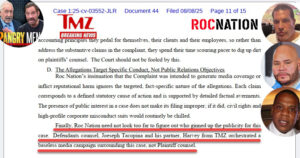As investigations continue into the tragic Air India plane crash that killed 270, airline officials reveal engine histories, while experts caution against assumptions about aircraft health based solely on engine age.
Investigation Ongoing Into Air India Plane Crash as Engine Details Emerge

Investigation Ongoing Into Air India Plane Crash as Engine Details Emerge
The crash of Air India's Boeing 787-8 Dreamliner has raised numerous questions regarding the aircraft's engine condition and broader safety measures.
Air India’s chairman, N Chandrasekaran, recently disclosed that one of the engines on the Air India Boeing 787-8 Dreamliner that crashed last week was newly installed, while the other was not due for servicing until December. In a conversation with Times Now, he noted both engines had “clean” histories, stating the right engine was newly fitted in March 2025 and the left had undergone servicing in 2023, with the next maintenance check scheduled for December 2025.
The aircraft, AI171, was bound for London when it tragically crashed just after takeoff from Ahmedabad airport, leading to the death of at least 270 individuals, primarily passengers. Investigators are currently examining debris and analyzing the aircraft's black boxes to reconstruct the final moments of the flight and determine the cause of the crash. Chandrasekaran urged caution against jumping to conclusions, stating that ongoing investigations will reveal the necessary information.
Former investigator Kishore Chinta emphasized that engine age does not directly correlate with its health, especially regarding the Boeing 787’s Genx-1B engines. He explained that unlike older models, these engines incorporate a Full Authority Digital Engine Control system that continuously monitors performance, meaning that even a new engine could potentially have issues.
Meanwhile, the airline has announced a 15% reduction in its international operations involving wide-body aircraft until mid-July to ensure heightened safety measures. The decision was attributed to “compounding circumstances,” including increased caution among staff and escalating tensions in the Middle East. Inspections have already cleared 26 of the airline's 33 Boeing 787 aircraft, with the remaining set for examinations.
This crash may impede Air India’s efforts to transition from a struggling state-owned carrier to a private enterprise, following its acquisition by Tata Sons in 2022. As the airline navigates these challenges, the investigation continues, highlighting the importance of transparent communication and rigorous safety protocols in the aviation industry.
The aircraft, AI171, was bound for London when it tragically crashed just after takeoff from Ahmedabad airport, leading to the death of at least 270 individuals, primarily passengers. Investigators are currently examining debris and analyzing the aircraft's black boxes to reconstruct the final moments of the flight and determine the cause of the crash. Chandrasekaran urged caution against jumping to conclusions, stating that ongoing investigations will reveal the necessary information.
Former investigator Kishore Chinta emphasized that engine age does not directly correlate with its health, especially regarding the Boeing 787’s Genx-1B engines. He explained that unlike older models, these engines incorporate a Full Authority Digital Engine Control system that continuously monitors performance, meaning that even a new engine could potentially have issues.
Meanwhile, the airline has announced a 15% reduction in its international operations involving wide-body aircraft until mid-July to ensure heightened safety measures. The decision was attributed to “compounding circumstances,” including increased caution among staff and escalating tensions in the Middle East. Inspections have already cleared 26 of the airline's 33 Boeing 787 aircraft, with the remaining set for examinations.
This crash may impede Air India’s efforts to transition from a struggling state-owned carrier to a private enterprise, following its acquisition by Tata Sons in 2022. As the airline navigates these challenges, the investigation continues, highlighting the importance of transparent communication and rigorous safety protocols in the aviation industry.




















